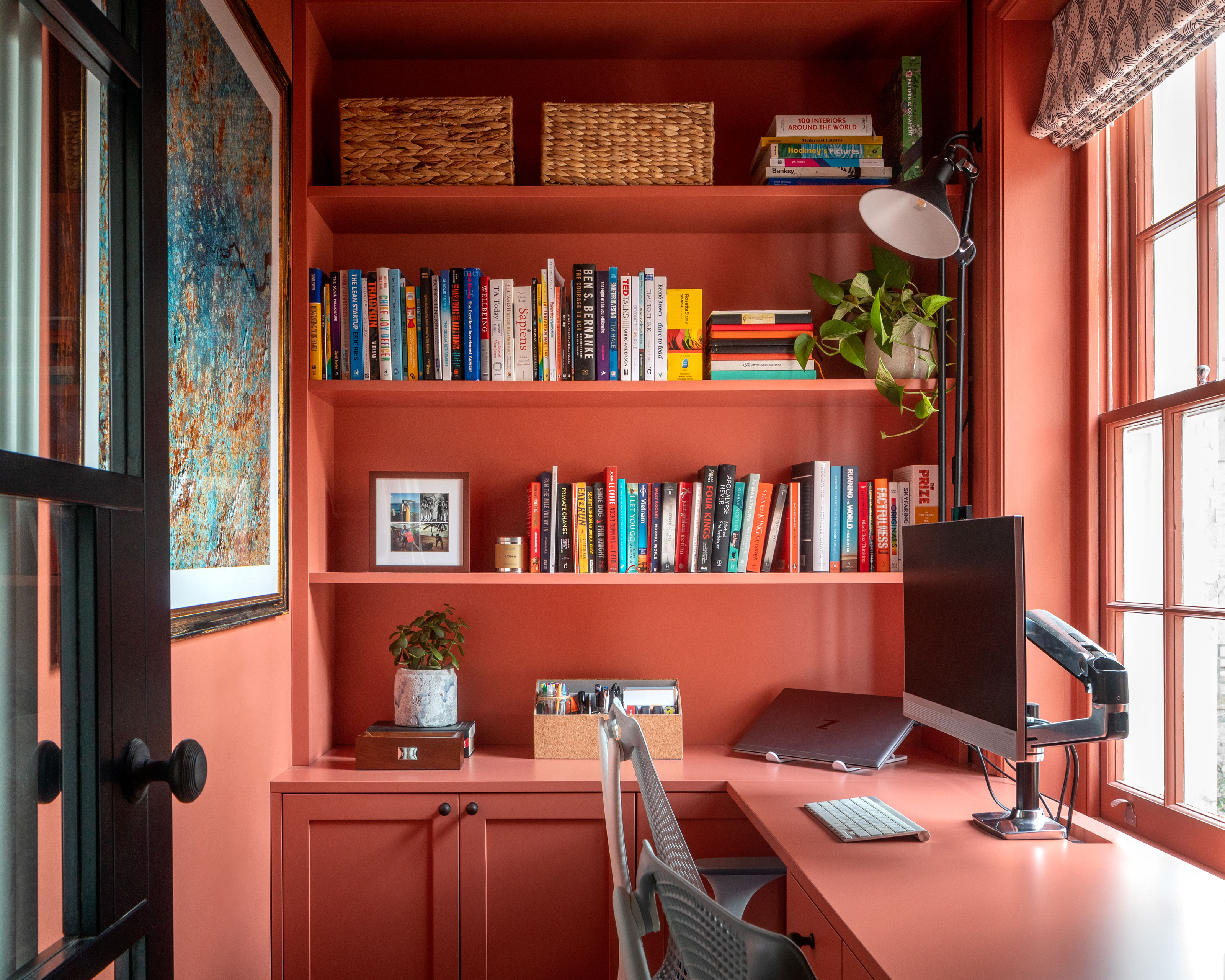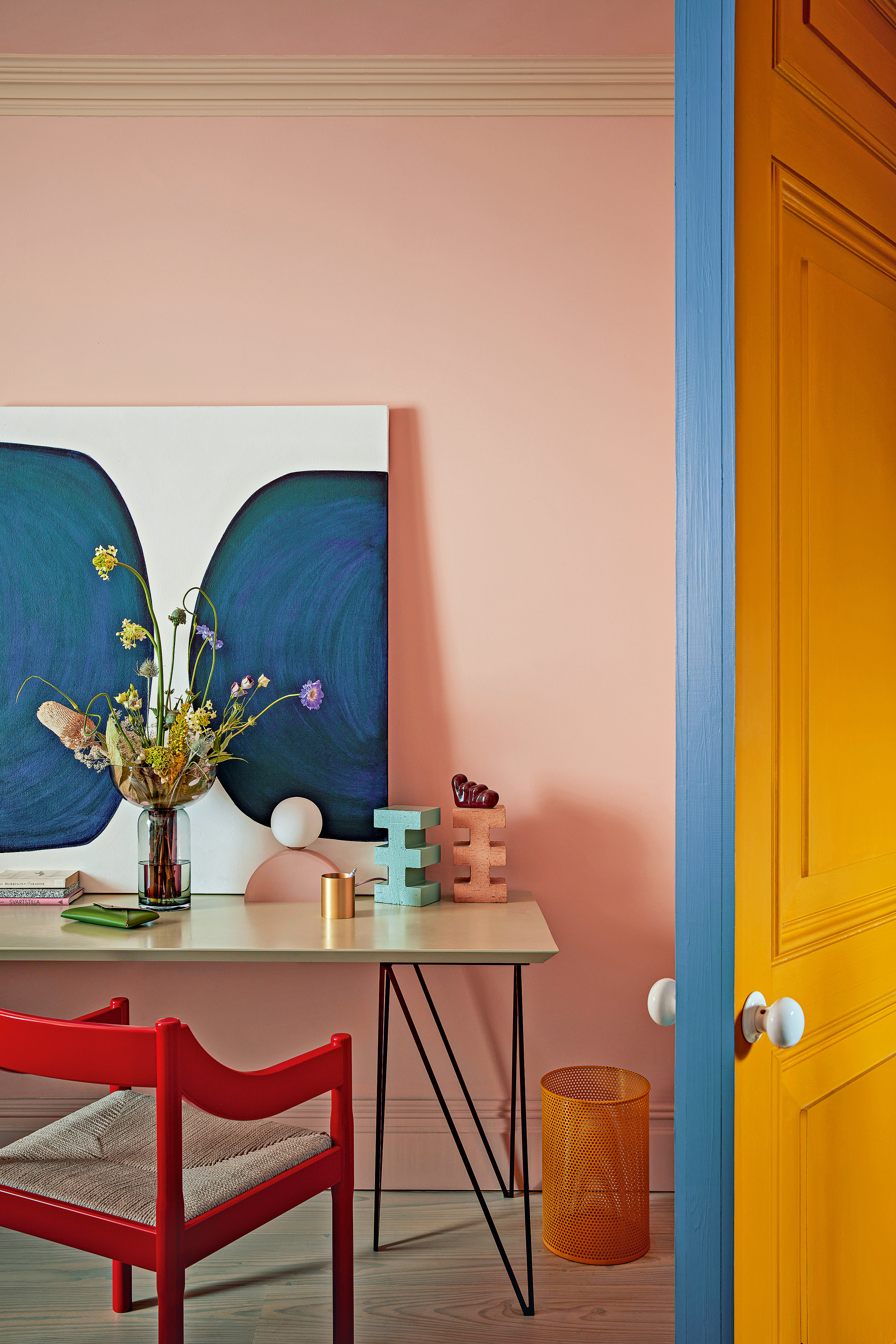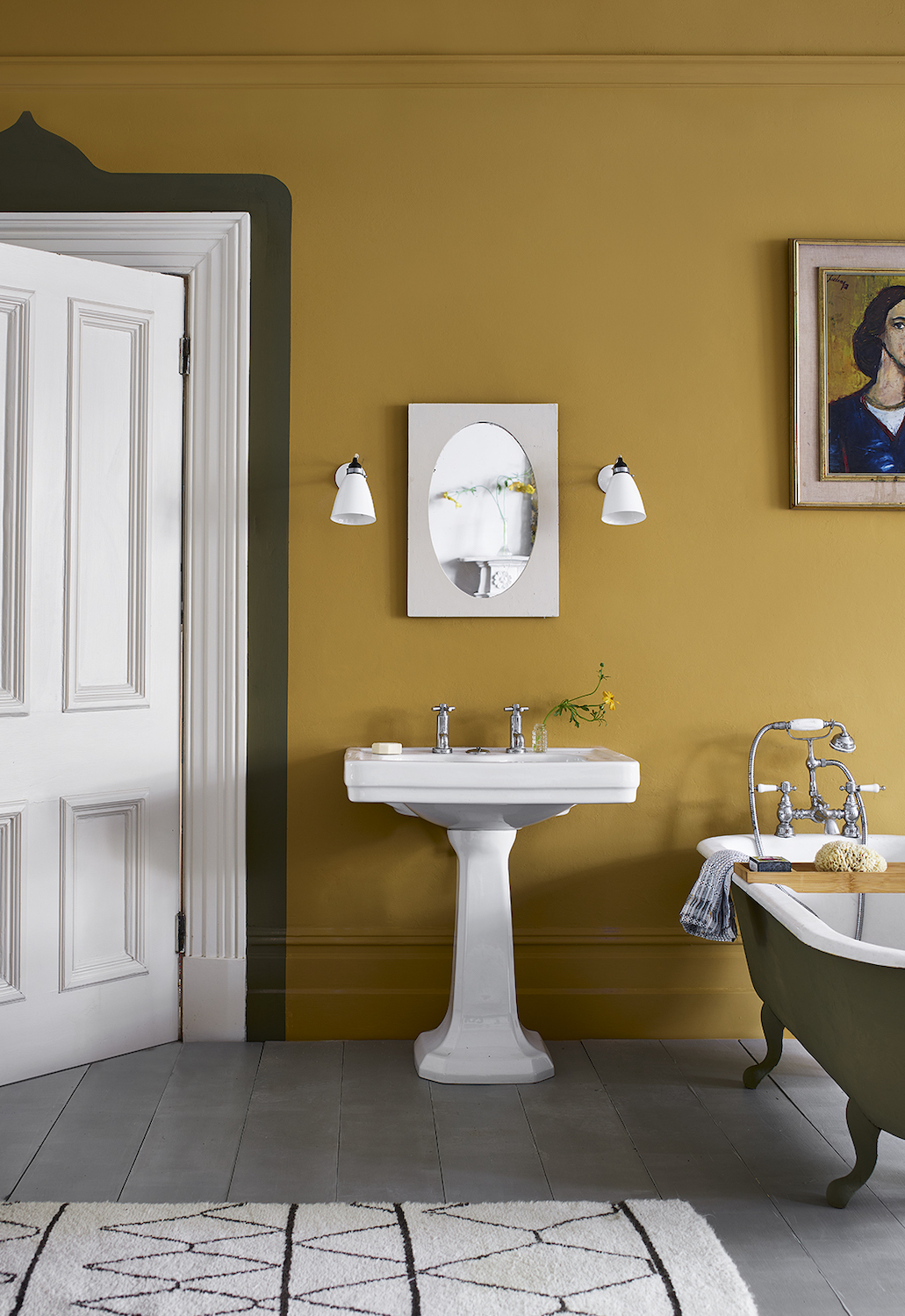How much paint do I need? The perfect guide to getting your calculations right
If you're looking to repaint a wall, a crucial first step is knowing how much paint you need...

When it comes to DIY, a crucial question you might often be faced with is how much paint do I need? With variables such as dimensions, fixed fittings, coats, and porosity changing the answer, it can feel like an irresolvable conundrum. Knowing how much paint you need is crucial to reducing paint wastage while also saving money.
“The age-old question ‘how much paint do I need’ is a tricky one as there are a variety of factors involved,” says Sam Bramley, color consultant for Lick. “In fact, not all paints are equal, and not all walls and surfaces are the same.”
“It’s important to roughly work out how much paint you will need as to avoid buying too much,” adds Helen Shaw, UK director at Benjamin Moore.
Once you’ve explored all of the paint ideas and decided on a color, knowing how much paint to buy is a crucial next step. Here’s the perfect guide to getting it right.
How much paint do I need? How to work it out in 5 easy steps
1. Check the porosity of your wall
“When it comes to calculating paint quantity, the first component to assess is your surface,” says Sam at Lick. “Knowing the type of material you are painting on is paramount. While applying the first coat, some of the paint gets absorbed by the surface you are working on.
“Porous and bare plaster surfaces will absorb more paint than wallpaper or upcycled furniture,” Sam adds. “Not factoring this in can result in a poor finish and last-minute paint panic buying.”
“Check your walls before you paint,” recommends Victoria Yardley, managing director at Victory Colours. “If you wipe your fingers on a wall and find a light dust of powder, then you will need to prime first.”
The Livingetc newsletters are your inside source for what’s shaping interiors now - and what’s next. Discover trend forecasts, smart style ideas, and curated shopping inspiration that brings design to life. Subscribe today and stay ahead of the curve.
- How to paint wooden floorboards – an easy project to give any room a rustic vibe

2. Measure the space you intend to paint
“To get an accurate calculation, measure the lengths of all the walls, then multiply this result by the height of the room,” says Victoria at Victory Colours.
If you are struggling with your tape measure: “A laser measure is a great choice for rooms with awkward and angled walls,” Emma Bestley, creative partner for YesColours. “It provides a precise measurement, with little room for error.”
3. Check the coverage of the paint you are using
“As a rule of thumb, 1 gallon of good quality, water-based paint will paint up to 350 square feet,” says Sam at Lick. Check the tin of your paint of choice, where it should tell you the paint’s spreading rate.
4. Add or subtract any features of the room
“Don’t forget to factor in your ceilings and any extras for any remedial work later on,” says Victoria. This could be skirting boards, doors, or any furniture you would like to match. Calculate the surface area, and add to your figure.
However: “Don’t forget to factor in any windows, doors, or fixed furniture such as fitted cupboards which need to be subtracted from your calculations.”

5. Account for multiple coats of paint
“Depending on the color strength and of course what you are trying to paint over you may require multiple coats,” says James Greenwood at Graham & Brown. “Most decorators always paint two coats onto their walls for a consistent finish however covering or applying dark shades may sometimes require three.”
Multiply your current calculation by the number of coats you would like to paint.
“In the same way, don’t brush aside the importance of the tools you are using,” suggests Sam at Lick. “Choosing the right roller and brush for the job will enable you to reap the rewards of beautiful walls and limit the coats needed. Before you dip the roller into the paint tray, make sure it’s slightly damp with water so it can soak up as much paint as possible for seamless coverage.”
- How to paint a room - the experts' fool proof guide
Using a paint calculator to work out how much paint you need
If working out how much paint you need is starting to get confusing, many paint retailers also have online paint calculators, like COAT and Dulux.
Simply input your measurements, and they’ll give you the answer. However, be wary that the figures with paint calculators will only be accurate if you are using that brand’s paint. For the most accurate results, do the calculations on your own, or use the paint of the calculator you are using.
How much paint do I need for furniture?
“For furniture, it would be highly likely you would need more than one tin of paint,” says James at Graham & Brown. “Use the same logic to work out the surface area of the item not forgetting the sides and back should you wish to paint them.”
- How to paint furniture - the expert guide to the perfect finish

How much paint do I need for wood?
If you are painting doors and skirting boards, the porosity will be different to your wall. Edward Bulmer suggests: “For woodwork, as a rough guide the company recommends 1 gallon of eggshell to cover 2-3 doors (both sides), and 1 gallon of eggshell will cover 65ft of skirting board. All figures are based on giving you a beautiful natural finish in no more than 2 coats of paint.”
Should I prime walls before painting them?
“If it’s on fresh plaster, including lime plaster then yes,” says Edward Bulmer. “When painting onto previously painted walls, you do not need a primer – as long as the necessary preparation work has been completed.”
Olivia Emily is one of the most exciting new talents in consumer lifestyle journalism. Currently finishing off a Masters in Journalism at the City University, London, she has quickly proved herself at being adept on reporting on new interiors trends. A regular contributor to Livingetc, she is brilliant at being able to decode information for our audience.